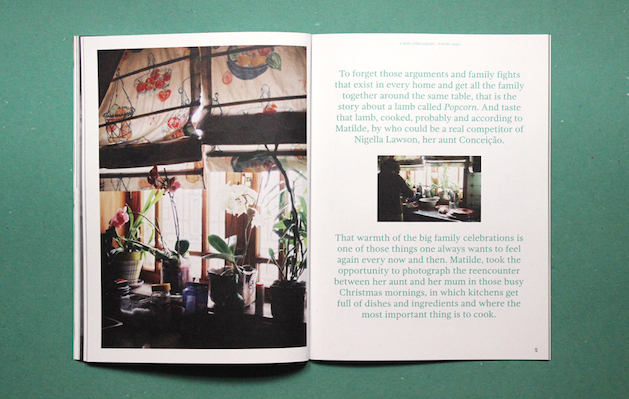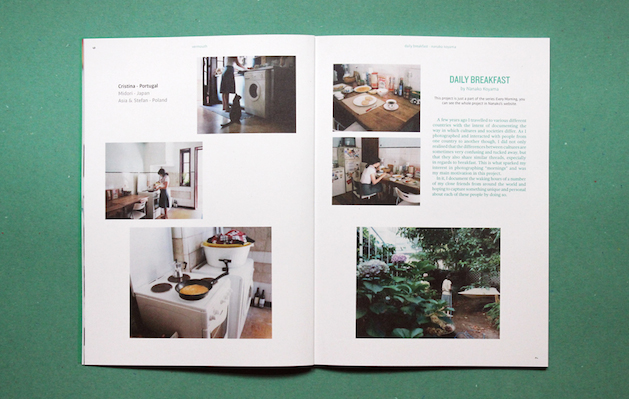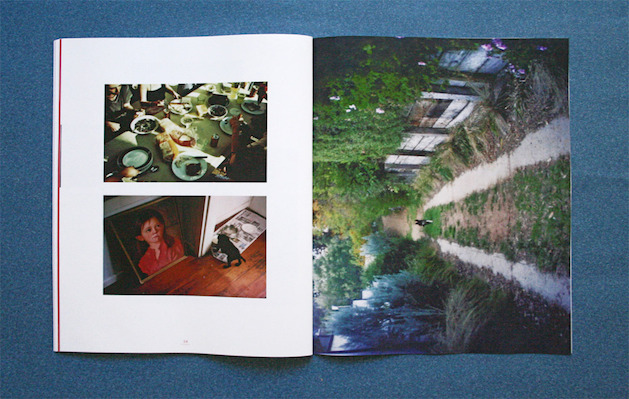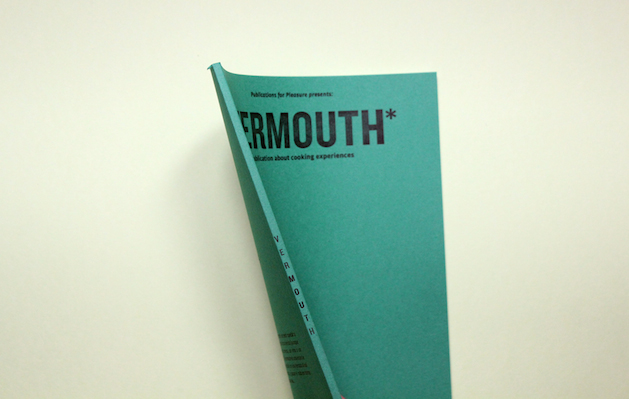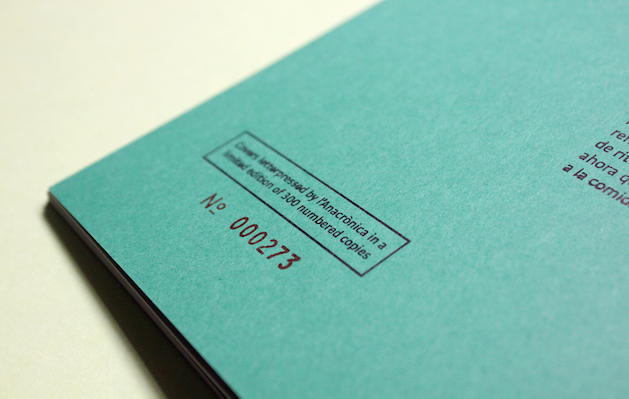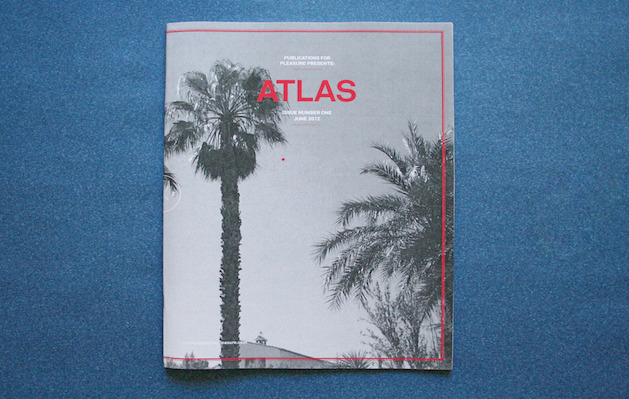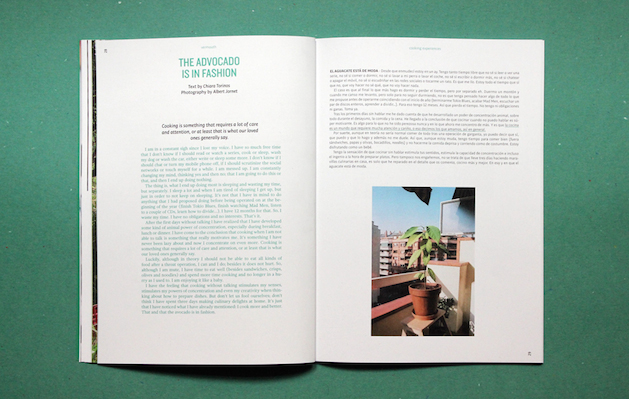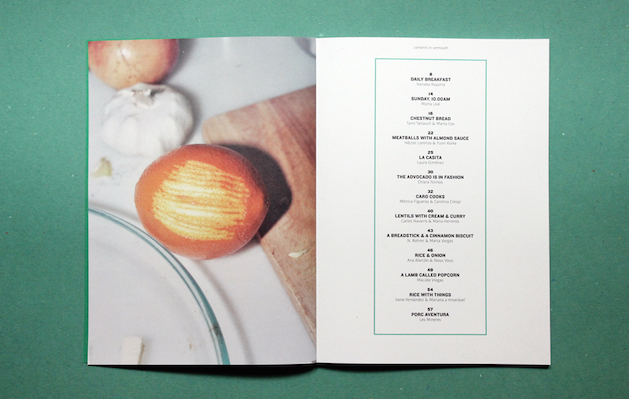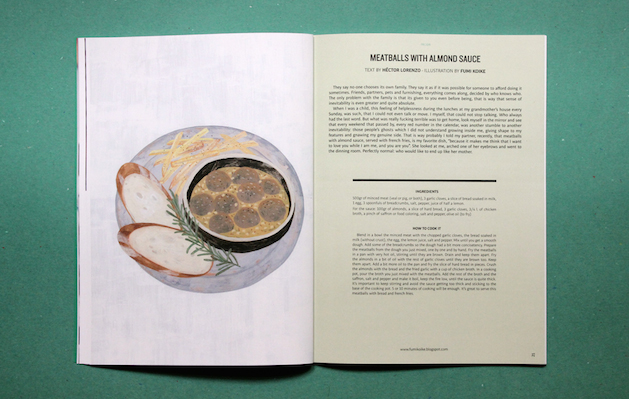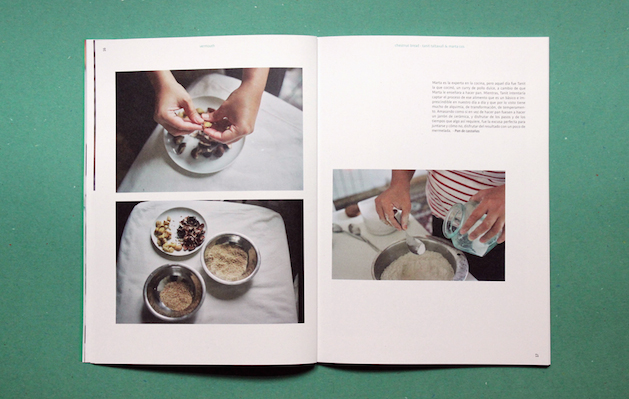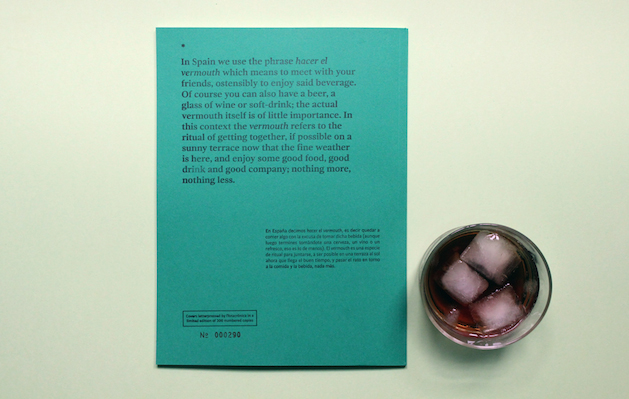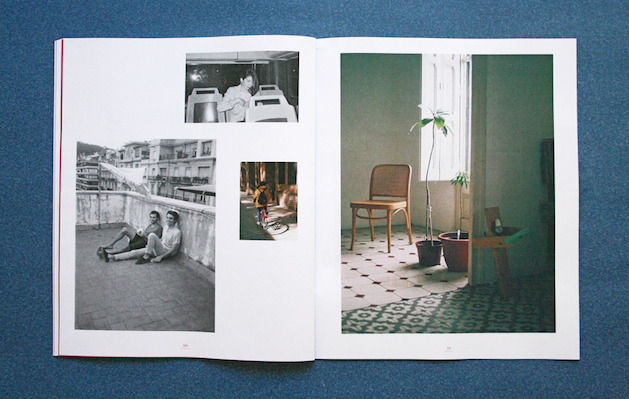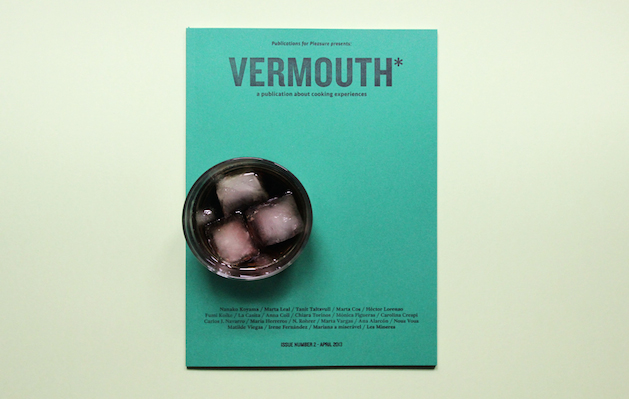
Meeting with friends over diner, cooking, drinking, experimenting with food in good company is what Vermouth wishes to celebrate. Published in Barcelona by Publications for Pleasure, Vermouth’s 300 copies sold out in the blink of an eye, delighting foodies with deeper stories than those usually shown in bigger publications. Interview with publishers Albert Jornet, Mònica Figueras and Bea Bascuñán.
Baron: How did Vermouthcame to be?
Vermouth: Is the second publication we’ve edited, designed and published with Publications for Pleasure. Each of our projects and publications start from a common interest or curiosity, from something that we like and that we find interesting. Food and cooking was something that we had been coming across a lot lately and the whole team of Publications for Pleasure is really keen about cooking, so we thought it would be a nice theme for the next publication. Besides that, we wanted to capture another point of view from that one you usually find in cooking books and recipe websites, we wanted to talk more about the experiences one lives inside the kitchen or the relation with some specific recipe or food and add some other things we didn’t include in the first publication, Atlas. This time we’ve added, besides photography and text, illustrations and an interview, which makes the publication much more dynamic and complete. What makes people cook? How do we relate to food and the time we spend cooking or eating? What is the importance of food? These are some of the questions we asked ourselves while crafting the magazine. Vermouth talks about cooking experiences from a very close and intimate point of view, through stories where, in one way or another, food is involved somehow.

B.: How does that translate to an editorial policy?
V.: Our aim is basically to edit and design publications that we would like to find in the bookshops we visit: publications that cover common subjects under special points of view. We would like people to understand that a Publications for Pleasure print is done with lots of love, dedication and time. We want people to get to know other creatives and get to know what do people do around the world. We also like to think of our project as a small platform for the work of other people too.
B.: Why choose print? What kind of paper do you use and why? Typography?
V.: We believe that printed publications give the proper feeling to the project. Photography looks much better in a printed page and long texts are read better when printed. Although we are not against digital, we think that printing gives value to the publication as a piece and an object itself. We’ve been using recycled paper for both Atlas and Vermouth because we like the touch and the feeling it gives to the publication. When it comes to typography, we try not to complicate things too much, although we’ve used different fonts in both publications. We try to look for typographies that adjust to what we want to express. We usually combine a serif one for the text and a sans for display and headlines. We just try to find the balance between two or three typographies that look good and work well together. For Vermouth, we’ve used a typography from the Catalan type designer, Jordi Embodas, whose work we specially like, Bulo; Ghandi Serif for the text and Knockout for headlines and the title itself.

B.: What has been the readers’ response?
V.: We launched our project little by little and the response has been great. Although our first publication, Atlas, had a very limited run of 100 copies, we managed to sell all of them, having printed a second edition of another 100 copies some months ago. People have been really receptive and excited about our second publication. We think that having a different theme for each publication and changing format, content, etc. makes people stay tuned to what you are going to do next. We’ve just came back from a book fair in Madrid, called Libros Mutantes, where we have been able to talk with people and receive really good and nice feedback relating to our project. So we are glad to be doing it well.
B.: Good print mags get a lot of love, but this isn’t always reflected in sales. How are you doing, financially?
V.: It is true that good printed magazines are not always a great source of incomes, but we are happy when we at least get back what was invested to begin with, so we can start working on the next issue. Small publishing houses usually work that way. As we said before, the first run of Atlas was sold out after 6 or 7 months and we had to print some more of it, which made us really happy. The thing is to work and print little by little and see how people react.
We don’t put advertising in our publications. We would like to keep it as clean as possible, but it is true that ads in magazines are a very big part of the magazines income. From our point of view, if your mag is going to include ads, they must linked and designed according to the content, so it doesn’t disturb the reader and kind of makes the magazine stronger as a whole. It can also even reinforce the mag’s brand. We try to collaborate with as many people as we can, from all around the world, so that our publication can reach more and more fans. This is our way of advertising.

B.: Can you give us a tour of the Spanish niche media scene?
V.: Spain has very good editorial designers and creative people, and in the last few years, besides the crisis and the economical situation, many new projects have been popping up. As we said, in April we participated in Libros Mutantes, a fair that takes place in Madrid and tries to promote both national and international independent publications of all kinds. Arts Libris is another fair that takes place in Barcelona, more focused on art books but it also brings people from everywhere to the city to show their work. Publishing houses such as Bside Books, Dalpine or Atem books are bringing a new spirit to this whole publishing scene. In Madrid and Barcelona, you can find really good bookshops who’ll reserve a place for all these new publications on their shelves: Sandwhich Mixto, Mutt, La Central, Panta Rhei, Café Molar, Fattbottom books… The Private Space (which is a multitask space: printers, publishing house…), in Barcelona, also promotes and organizes many activities around the publishing scene. Everything’s evolving slowly, one step at a time, in Spain, but everyday you can find more and more stuff that’s definitely worth your time.
B.: Are there future projects in the works?
V.: We have designed a special publication about Mònica’s work that we would like to launch in a few months and we are also working on some other smaller publications about photography, short stories and other stuff that we hope will see the light of day as soon as possible. We try to keep doing things from one publication to another and keep people connected to what we do, so any small project or new idea can be the perfect excuse for a bigger thing. Besides Publications for Pleasure we all work in other graphic design projects, so we remain constantly active.


